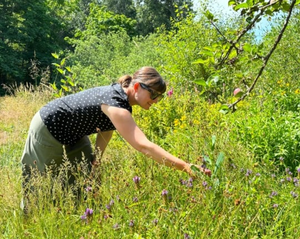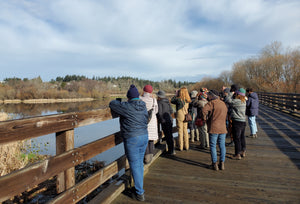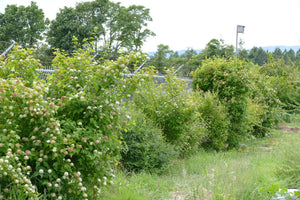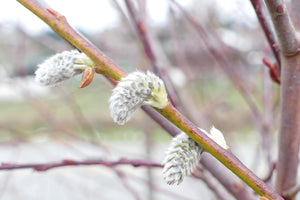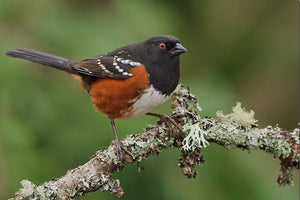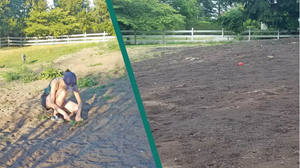Weekly with Daly: Winter Buds

The Weekly with Daly is a regular column about the musings of the nursery written by our in-house wildlife observer and passionate conservationist, Julia Daly.
February 23, 2023
A couple of weeks ago, I was lucky enough to attend a “Winter Tree and Shrub Identification” workshop taught by Jay Rastogi, site Director of Swan Lake Christmas Hill Nature Sanctuary, the first field trip of the Native Seed & Growing Project. Like the other attendees, I quickly became absorbed by the beauty and intricate details found in the buds of our local native trees and shrubs, particularly the trees. Because their buds are high in the canopy, tree buds are often hard to see; one must look for a fallen branch to get an intimate look. Bud size, shape, colour and placement on twigs can all assist with identifying plants in winter well before they have leafed out or flowered. Buds can also reveal a plant’s growth pattern and life history characteristics, such as whether the plant is wind or animal pollinated, monecious or dioecious, or has an alternate or opposite leaf and branch arrangement (figures 1 and 2).
I invite you to challenge yourself on a winter botany walk. Bring a sketchbook and magnifying glass and draw and label what you see. I guarantee you’ll discover something new to love and appreciate about your favourite trees and shrubs!

Figure 1. Sketches from the workshop (left) Black Cottonwood (right) Red Alder.

Figure 2 (left). Sample of plants with ‘alternate’ branching arrangements. Left to right: Pacific crabapple (Malus fusca), black cottonwood (Populus trichocarpa), big-leaf maple (Acer macrophyllum), Scouler’s willow (Salix scouleriana).
Figure 3 (right). Samples of plants with ‘opposite’ branching arrangements. Left to right: red-osier dogwood (Cornus sericea), mock orange (Philadelphus lewisii), red elderberry (Sambucus racemosa), snowberry (Symphoricarpos albus).

Figure 4 (left). Male flower and leaf buds of June plum (Oemleria cerasiformis). June plum is dioecious, with male and female flowers forming on different plants.
Figure 5 (right). Female flower and leaf buds of June plum. Note the auxiliary branchlets where drupes (fruits) were attached last year. June plum buds are some of the first to open on Southern Vancouver Island.
Further reading:
Winter Twigs, A Wintertime Key to Deciduous Trees and Shrubs of Northwest Oregon and Western Washington. By Helen Gilkey and Patricia Packard
Trees and Shrubs and Winter, An Identification Guide for Northern British Columbia. By Rosamund Pojar and Evi Coulson.
Plant Identification Terminology, An Illustrated Glossary. By James Harris and Melinda Harris.
- Tags: botany Weekly with Daly
- Satinflower Nurseries

